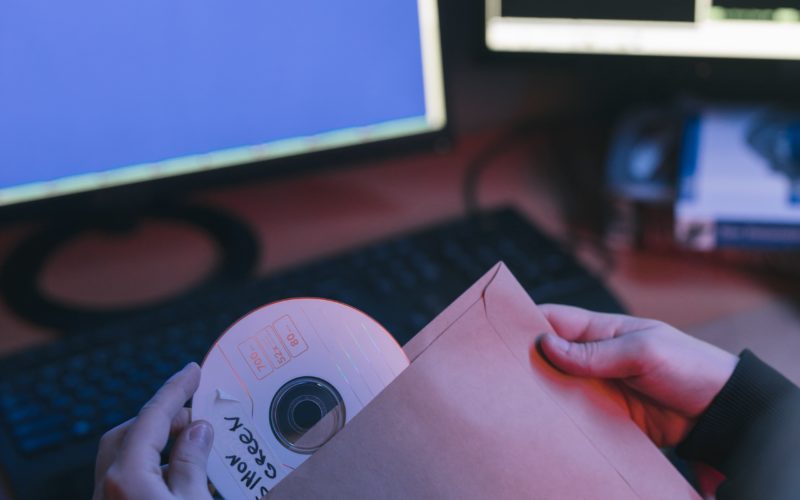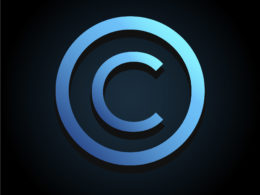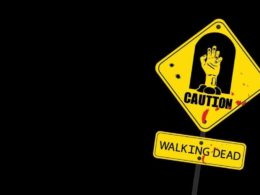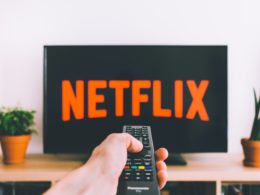The Internet is, of course, revolutionary. It connects people across the globe and allows them to share ideas, content, and information across international borders almost instantaneously. While most people use the Internet within the bounds of the rules established that govern access to and use of information, there are always bad actors who operate beyond those rules. Since its inception, Internet users have accessed content that they otherwise would be beyond reach. From Napster to BitTorrent to illegal streaming, there have always been ways for individuals to freely gain access to content that would normally be hidden behind a paywall or other obstacle. In fact, “80% of piracy is attributable to streaming…which [has] overtaken BitTorrent and other download-based technologies that deliver unauthorized live television shows and video on demand over the internet.”1[1]David Hirschmann, Impacts of Digital Video Piracy on the U.S. Economy, GLOBAL IP CENTER, (Jun. 2019), https://www.theglobalipcenter.com/wp-content/uploads/2019/06/Digital-Video-Piracy.pdf. Further, it is estimated that “global online piracy costs the U.S. economy at least $29.2 billion in lost revenue each year.”2[2]Id. With such drastic consequences of leaving such action unchecked, new legislation became necessary to begin curtailing such activity since the numbers show that the measures in place were not sufficient. In response, Congress passed the Protecting Lawful Streaming Act (“PLSA”) which went into effect on December 27, 2020. Although the PLSA purports to significantly deter illegal streaming activities by specifically targeting “[commercial] service[s] that [have] the primary purpose of publicly performing works by digital transmission,”3[3]Protecting Lawful Streaming Act of 2020 18 U.S.C. § 2319C. it is important to consider how previous statutes have failed to curb illegal streaming to understand the potentially momentous impact of the PLSA moving forward.4[4]Protecting Lawful Streaming Act of 2020, 18 U.S.C.A. § 2319C (West 2021); see also Talia Balakirsky, PLSA Takes Aim at Piracy In the Streaming Era, BROOKLYN SPORTS & ENTERTAINMENT LAW BLOG (Apr. 4, 2021), https://sports-entertainment.brooklaw.edu/plsa-takes-aim-at-piracy-in-the-streaming-era/.
Prior to the PLSA, two primary pieces of legislation applied to illegal streaming activities: the Cable Communications Policy Act of 1984 (“CCPA”) and the Digital Millennium Copyright Act (“DMCA”).
Under telecommunications law, the CCPA penalizes individuals who intercept cable service with a fine of $1,000 or less, six months imprisonment or less, or both.5[5]Cable Communications Policy Act of 1984, 47 U.S.C. § 553(b) (2018); see also Communications Assistance for Law Enforcement Act, 47 U.S.C. § 605(e) (2018). Further, it penalizes those who violate the law, “willfully and for purposes of commercial advantage or private financial gain” with a fine of $50,000 or less, two years imprisonment or less, or both.6[6]47 U.S.C. § 553(b); see also 47 U.S.C. § 605(e).
While such penalties seem like a reasonable deterrent for individuals who pirate cable service, in practice it is virtually inapplicable to those who post illegal streams on the Internet. For example, cases that have found violations under the CCPA have often involved bar or restaurant owners who displayed pirated content to patrons without paying for it themselves. The Eastern District Court of Kentucky found that a bar owner was vicariously liable for streaming a pay-per-view boxing match via a smartphone connected to the internet that was plugged into the bar’s television without authorization, despite the owner’s absence from the bar and lack of awareness about the event.7[7]J & J Sports Productions, Inc. v. Jaschkowitz, No. 5:14-CV-440-REW, 2016 WL 272015, at *9-10 (E.D. Ky. May 6, 2016). Similarly, the Eastern District Court of Pennsylvania found that a bar owner was vicariously liable for displaying a boxing match without authorization, despite not being present at the bar on the night in question, as he had a financial interest in the fight being shown since he was a co-owner and shareholder of the bar.8[8]J & J Sports Productions, Inc. v. Hackett, 269 F. Supp. 3d 658, 665 (E.D. Pa. 2017). In both cases, however, the defendants were liable for damages of only $3,500 and $1,500, respectively.9[9]Jaschkowitz, 2016 WL 272015, at *12; Hackett, 269 F. Supp. 3d at 667.
Further, in the cases above, the identity of the violator was relatively easy to deduce, as bar and restaurant owners must go through certain minimal screening measures to establish their businesses and register as owners. In contrast, creating a website often has no comparable mechanism to verify the identity of the creator, so it can be difficult to identify who to sue. Moreover, the difficulty in identifying a potential violator is magnified when many streaming websites merely host another’s stream by embedding the stream’s code into their websites. As a result, the CCPA has largely failed to target the source of illegal streaming, as it only penalizes, often incrementally, those who view unauthorized content in a single instance via cable interception rather than targeting those who broadcast streams accessible to anyone with an Internet connection.
In addition to the telecommunications protections, copyright law also protects against illegal streaming. Specifically, the DMCA provides the most pertinent protections for copyright owners against illegal streaming. The DMCA provides copyright owners with a cause of action for copyright infringement when a website posts, streams, or otherwise displays copyrighted work on the Internet without permission.10[10]Digital Millennium Copyright Act, 17 U.S.C. § 1201(a)(1)(A) (2018). Website operators have defenses available to them, however, if a user posts pirated, unauthorized content under the DMCA’s “safe harbor” provision.11[11]Viacom International, Inc. v. YouTube, Inc., 676 F.3d 19, 25 (2d. Cir. 2012). The DMCA provides that any of the three the following conditions each suffice to limit infringement liability of the website owner: (i) lack of actual knowledge, (ii) lack of awareness “of facts or circumstances from which infringing activity is apparent” or (iii) expeditious removal of infringing content once knowledgeable of it or made aware.12[12]Digital Millennium Copyright Act, 17 U.S.C. § 512(c)(1)(A) (2018). If any of these conditions are met and the operator does “not receive a financial benefit directly attributable to infringing activity,” then the defendant operator may be able to successfully assert a safe harbor defense.13[13]Id. § 512(c)(1)(B).
As currently applied, the DMCA seems to have a loophole where operators can simply ignore red flags that infringement is occurring on their websites and claim that they did not know such infringement was occurring and assert a successful safe harbor defense. The Second Circuit Court of Appeals, however, attempted to close this loophole by clarifying that such lack of awareness means “whether the provider was subjectively aware of facts that would have made the specific infringement ‘objectively’ obvious to a reasonable person.”14[14]Viacom International, 676 F.3d at 31. The court went on to further state that such a finding of “willful blindness” by a website operator can lead to infringement liability under the DMCA.15[15]Id. at 35. Willful blindness is “‘conscious avoidance’ amounting to knowledge where the person was ‘aware of a high probability of the fact in dispute and consciously avoided confirming that fact.’”16[16]Id. Consequently, in theory, the DMCA provides copyright owners with adequate tools to recover damages that result when their protected works are posted on the Internet without their authorization to websites notorious for infringement. In practice, however, infringement plaintiffs still face an uphill battle due to their high evidentiary burden of proof.
While the DMCA arguably provides more robust protection against illegal streaming than the CCPA, a plaintiff must still prove that the website operator had actual knowledge of infringement, reasonable awareness of infringement, or failed to act to remove infringing content once aware.17[17]17 U.S.C. § 512(c). While seemingly fair, it may be unreasonably difficult or excessively burdensome for infringement plaintiffs to gather the required information and inculpating evidence since they are outsiders to a website’s operations and most evidence is digital and hard to trace.
Depending on the scale, some websites may not have a way to report infringing activity to a website administrator so showing that a website had actual knowledge or reasonable awareness of infringement may be virtually impossible in such cases. Even if a website user can report infringement, the obstacle for proving that a website owner had the requisite knowledge or awareness remains present and is a high standard for infringement plaintiffs to carry. For example, in Viacom International, Inc. v. YouTube, Inc., the plaintiffs argued that YouTube was reasonably aware and willfully blind to infringement when plaintiffs alerted them to “infringements occurring with particular works, and occasional indications of promising areas to locate and remove them.”18[18]Viacom International, Inc. v. YouTube, Inc., 940 F. Supp. 2d 110, 116 (S.D.N.Y. 2013). The Southern District Court of New York disagreed, however, and ruled that YouTube was not willfully blind when only “an area of search is identified, and YouTube is left to find the infringing clip.”19[19]Id. at 116-117. The reality, however, is that illegal streaming domain addresses are frequently changed, moved, and taken down, so providing a specific domain address in such a scenario is problematic, especially when coupled with the existing difficulty of determining the identity of the website owner.
Despite the avenues of relief under the CCPA and the DMCA, history shows that more effective protections are needed to effectively deter illegal streaming. The issue of illegal streaming is compounded by the continual advances in technology, which make detecting and tracing illegal streaming more troublesome. While it remains to be seen what impact the PLSA will have on curbing illegal streaming moving forward, the PLSA is undoubtedly a “successful first step.”20[20]Talia Balakirsky, PLSA Takes Aim at Piracy In the Streaming Era, BROOKLYN SPORTS & ENTERTAINMENT LAW BLOG (Apr. 4, 2021), https://sports-entertainment.brooklaw.edu/plsa-takes-aim-at-piracy-in-the-streaming-era/.
Written by: Joe Cairo
Joe is a 2023 J.D. Candidate at Brooklyn Law School
1 David Hirschmann, Impacts of Digital Video Piracy on the U.S. Economy, GLOBAL IP CENTER, (Jun. 2019), https://www.theglobalipcenter.com/wp-content/uploads/2019/06/Digital-Video-Piracy.pdf.
2 Id.
3 Protecting Lawful Streaming Act of 2020 18 U.S.C. § 2319C.
4 Protecting Lawful Streaming Act of 2020, 18 U.S.C.A. § 2319C (West 2021); see also Talia Balakirsky, PLSA Takes Aim at Piracy In the Streaming Era, BROOKLYN SPORTS & ENTERTAINMENT LAW BLOG (Apr. 4, 2021), https://sports-entertainment.brooklaw.edu/plsa-takes-aim-at-piracy-in-the-streaming-era/.
5 Cable Communications Policy Act of 1984, 47 U.S.C. § 553(b) (2018); see also Communications Assistance for Law Enforcement Act, 47 U.S.C. § 605(e) (2018).
6 47 U.S.C. § 553(b); see also 47 U.S.C. § 605(e).
7 J & J Sports Productions, Inc.v. Jaschkowitz, No. 5:14-CV-440-REW, 2016 WL 272015, at *9-10 (E.D. Ky. May 6, 2016).
8 J & J Sports Productions, Inc. v. Hackett, 269 F. Supp. 3d 658, 665 (E.D. Pa. 2017).
9 Jaschkowitz, 2016 WL 272015, at *12; Hackett, 269 F. Supp. 3d at 667.
10 Digital Millennium Copyright Act, 17 U.S.C. § 1201(a)(1)(A) (2018).
11 Viacom International, Inc. v. YouTube, Inc., 676 F.3d 19, 25 (2d. Cir. 2012).
12 Digital Millennium Copyright Act, 17 U.S.C. § 512(c)(1)(A) (2018).
13 Id. § 512(c)(1)(B).
14 Viacom International,676 F.3d at 31.
15 Id. at 35.
16 Id.
17 17 U.S.C. § 512(c).
18 Viacom International, Inc. v. YouTube, Inc.,940 F. Supp. 2d 110, 116 (S.D.N.Y. 2013).
19 Id.at 116-117.
20 Talia Balakirsky, PLSA Takes Aim at Piracy In the Streaming Era, BROOKLYN SPORTS & ENTERTAINMENT LAW BLOG (Apr. 4, 2021), https://sports-entertainment.brooklaw.edu/plsa-takes-aim-at-piracy-in-the-streaming-era/.




